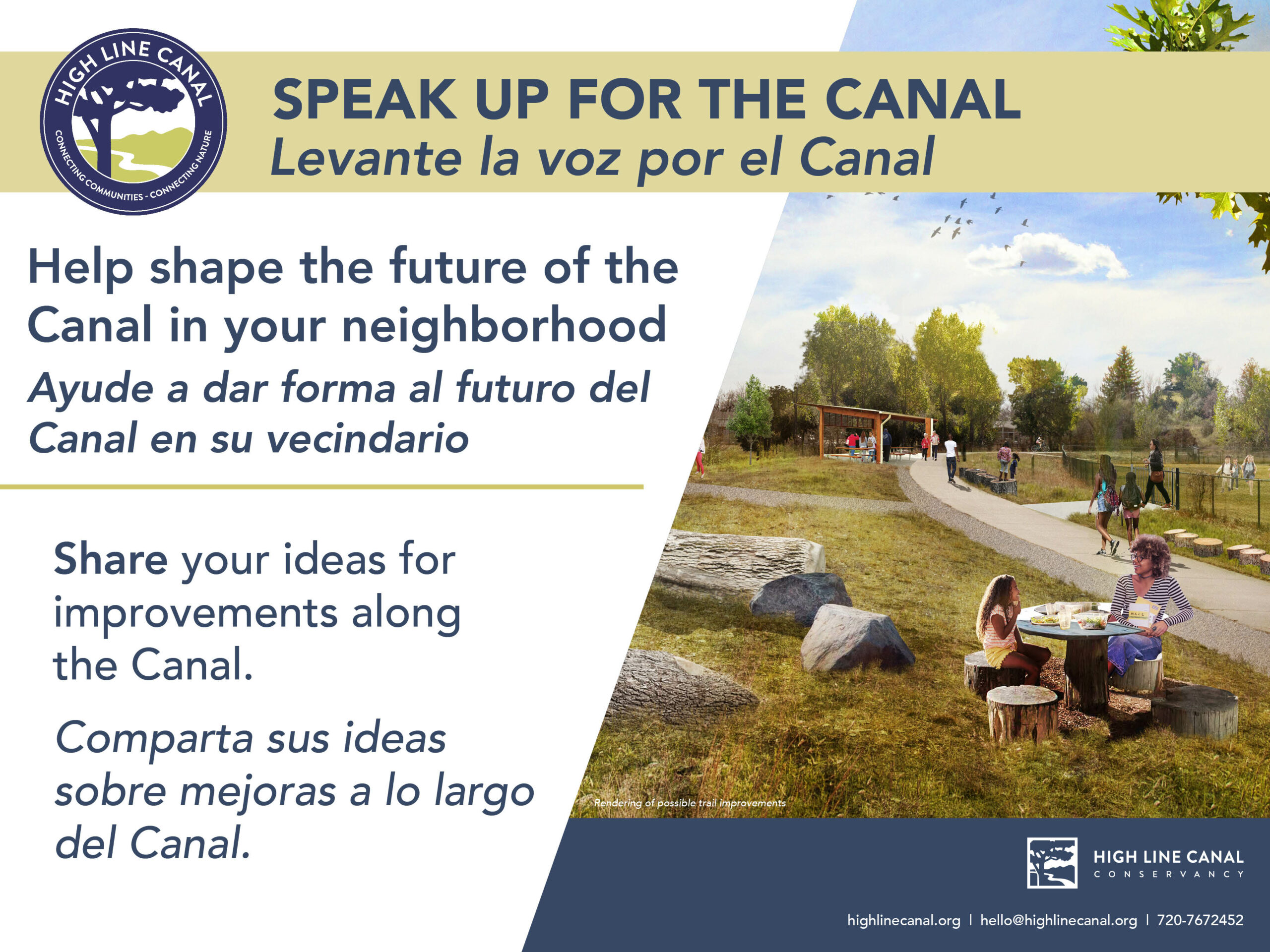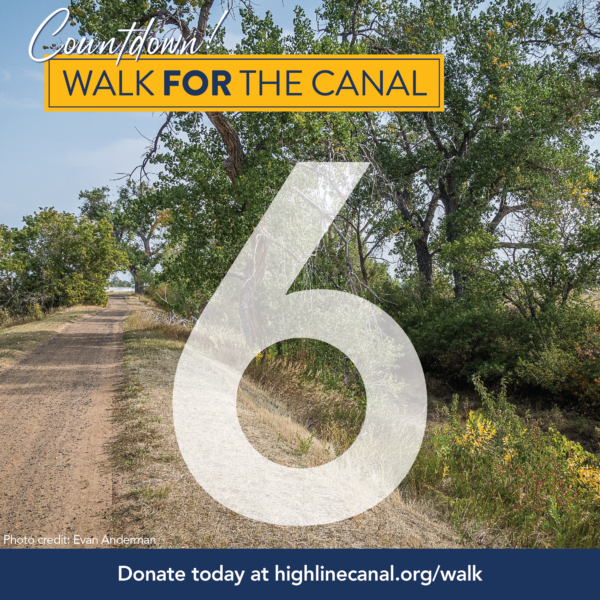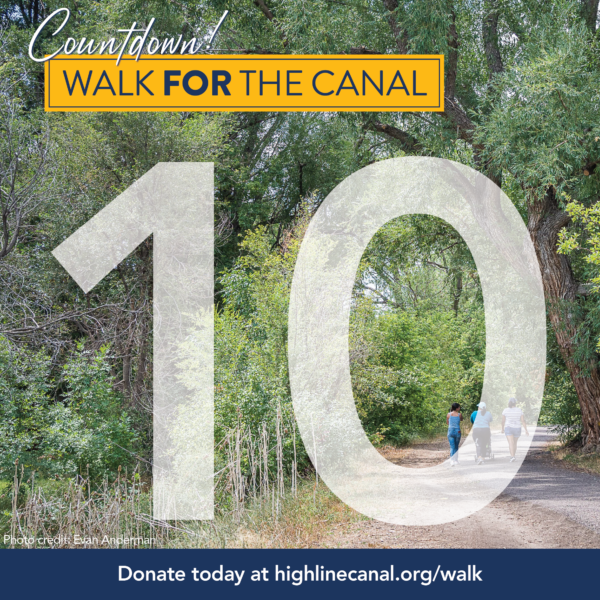My name is Jack, and I am the High Line Canal Conservancy’s (Conservancy) Stormwater and Natural Resources Fellow. As we’ve covered in previous blogs, the High Line Canal (Canal) is undergoing an exciting transition. For the first hundred-plus years of its existence, it served as an irrigation canal, distributing water from the South Platte River in Waterton Canyon all the way to Green Valley Ranch in northeast Denver. As an irrigation delivery method, the Canal is highly inefficient, losing up to 80% of the water that enters it to seepage and evaporation.
Due to a decreasing customer base and this inefficiency, Denver Water brought together all of the local governmental partners along the Canal to examine ways to transition the Canal’s functionality. A 2014 feasibility study confirmed that the Canal is well-situated to serve as green stormwater infrastructure for 62 of its 71 miles — this study helped shape visions for the future function of the Canal. Since 2018, the Conservancy has been working with Denver Water, Mile High Flood District and the 11 jurisdictions along the Canal to transition towards green stormwater management, with the first stormwater projects already in place and more on the way.
MAKING A CASE FOR THE CANAL AS A STORMWATER MANAGEMENT SYSTEM
Throughout the process of transforming the Canal from an irrigation delivery system to stormwater management infrastructure, several analyses have been performed to assess the various benefits of using the Canal for stormwater. Perhaps the most unique of those analyses apply a framework developed by the U.S. Environmental Protection Agency (EPA): the Augmented Alternatives Analysis, or AAA for short. The AAA framework is a 10-step process that provides a pathway for decision-makers (such as stormwater managers) to turn broad goals into specific, measurable metrics that are then scored, allowing for otherwise hard-to-compare alternatives to be compared to one another.
One of the main values of this type of analysis is that cost is not included until the end of the process and is merely a factor in decision-making rather than the factor in decision-making, allowing for other benefits to be evaluated objectively. Another key value is the incorporation of community input early in the goal-setting process to ensure their voices are heard and to tie in key environmental and social benefits related to stormwater improvements. While the U.S. EPA originally designed this framework with municipal utilities in mind, the Canal’s transition provided a unique opportunity to see how it would work in a related setting but with a broad range of stakeholders, including multiple jurisdictions with varying stormwater management needs. As a result, future organizations will be able to apply the learnings from the Conservancy’s case study and adapt the AAA process for their own purposes.
EXAMINING THE CANAL’S U.S. EPA AAA GOALS
In May 2020, the Conservancy and the U.S. EPA hosted a webinar attended by over 50 community members and stakeholders to launch the AAA process and take the first step of identifying goals that are most important to the communities along the Canal. These goals are broad, high-level statements about what the Conservancy and jurisdictions hope to achieve through the project, regardless of alternative. Each goal was ranked and weighed (10 being the highest) with input received from a community survey and the Conservancy’s technical leadership team. Over the past eight months, the team, comprised of stormwater managers and policy leaders, has been working with the U.S. EPA to develop the AAA framework for the Canal, developing each goal into objectives, criteria, and metrics that provide specific, measurable outcomes to evaluate across each alternative. The goals identified during that webinar, their respective objectives, and weighting (in parentheses) are:
- Goal 1 – Stormwater Management: Conveyance, Treatment and Flood Mitigation (10): Reduces the number of pollutants flowing into natural waterways, provides for alternative conveyance and supports flood risk management through a green infrastructure approach.
- Objectives: Improve water quality, support flood attenuation, and provide stormwater conveyance.
- Goal 2 – Community Livability (7): Encourages healthy lifestyles and bolsters quality of life.
- Objectives: Enhance recreational use and experience and improve environmental conditions.
- Goal 3 – Public Understanding of Stormwater Management (5): Raising stakeholder and community awareness of the process and benefits of transforming the Canal for stormwater management.
- Objectives: Advance community understanding of stormwater management and promote green infrastructure.
- Goal 4 – Ecological Enhancement (5): Enhances environmental health by building and supporting ecological diversity.
- Objectives: Maintain/expand a connected network of riparian habitat, maintain/expand plant diversity and abundance, and support the water cycle.
These overarching, community-derived goals provide the framework for the rest of the AAA process. They provide direction for how to evaluate and compare alternatives to determine which alternative provides the most benefit for the Canal and its surrounding communities. We will detail how the evaluation process is performed and evaluate how well each alternative meets each goal in a subsequent blog post, so stay tuned!








